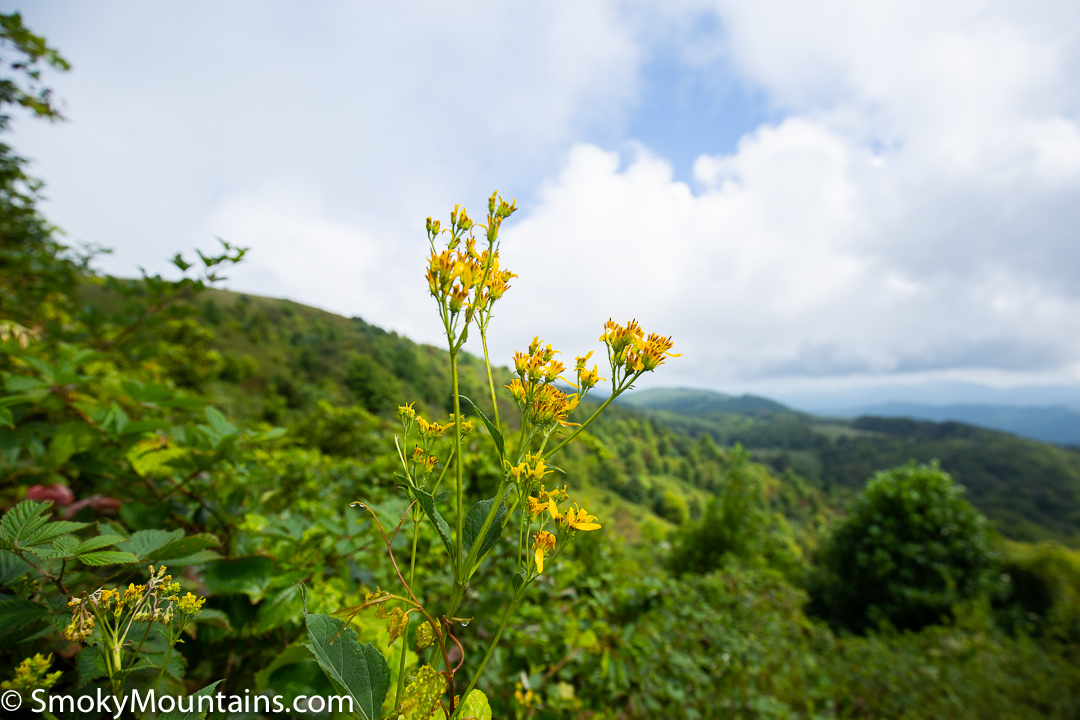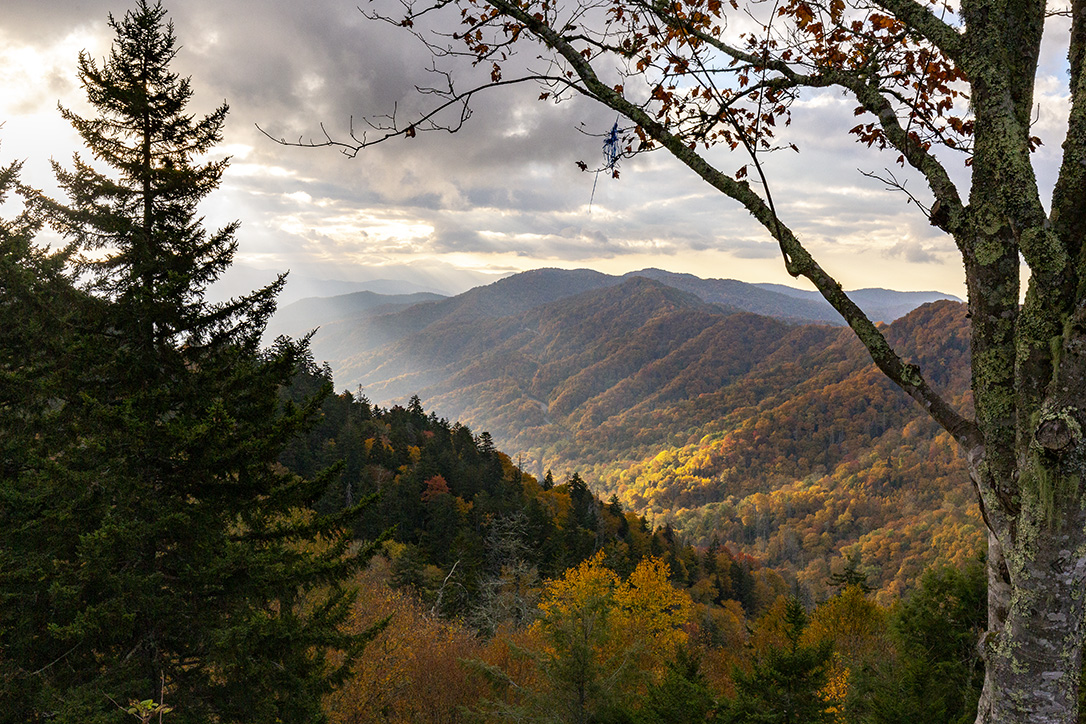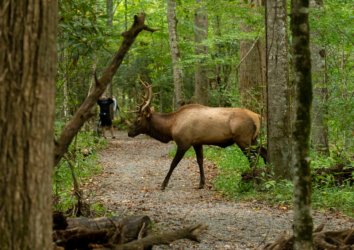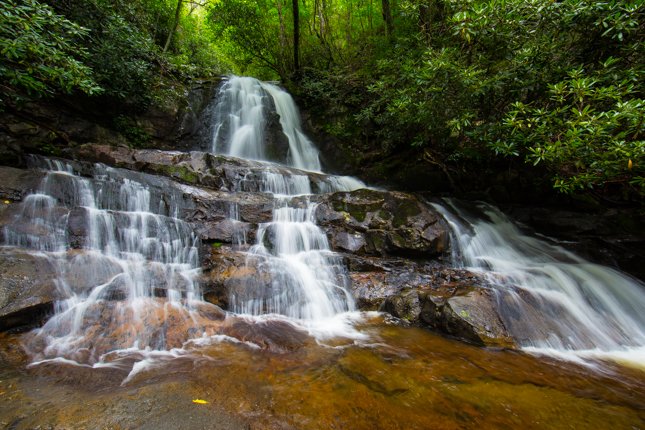The Great Smoky Mountains are plenty amazing from the car. From the Cades Cove Loop and the lush Roaring Fork Motor Nature Trail to the high vantages of Newfound Gap and Clingmans Dome, there’s plenty to see via four wheels. But most of this range lies away from the blacktop, and those who take to its hiking trails experience the Smokies on a deeper, more intimate level.
Circumstances or personal preferences may mean you’re considering taking to those trails alone. Solo hiking can be hugely rewarding, but it’s also inherently riskier than hiking with others. With proper planning and preparedness, though, it can be a safe and wonderful way to experience this incredible place.
Here are some tips for solo hiking in Great Smoky Mountains National Park, including things to bring along, steps to take before your outing, and how to choose a good trail.
Consider Whether Solo Hiking is Right For You

Solo hikers need to be well versed in trail navigation, comfortable making decisions and weighing risks in the backcountry, and familiar with the basics of first aid. Long story short, they must be more self-reliant.
Solo hiking may not be for everybody. The good news is you’ve got other options in the Great Smokies, even if you don’t have family or friends along to hit the trail with you.
You can consider joining a ranger-led hike, for example. This is an excellent way to not only get some trail mileage in but also learn more about park ecology and history. Then there are guided hiking tours through local outfitters, plus regional hiking clubs.
Packing for Solo Hiking in the Great Smokies

Packing the right gear and supplies goes a long way toward minimizing danger and maximizing comfort and confidence while solo hiking.
The trick—and this applies not only to solo but also group hiking—is to always bring backcountry essentials, even on a short, accessible amble. Those essentials include:
- a first-aid kit
- flashlight or headlamp (with extra batteries)
- extra food and water (and, ideally, a water filter/purifier)
- extra clothing layers
- matches, lighter, and fire-starting material
- whistle and/or signaling mirror
- a map and compass
You certainly should have a high-quality trail map for the Great Smokies. We also recommend the appropriate USGS topographic map, just for good measure. And every hiker should know how to use a compass and always have one along on the trail, even if you also use a GPS.
Extra clothing layers—which should include a warm hat and gloves, plus raingear—give you the ability to respond effectively to the Smokies’ shifting weather. Getting drenched in a downpour isn’t just miserable: It can also put you at risk of hypothermia.
Share Your Hiking Itinerary With Others

Along with proper packing, one of the most vital steps when solo hiking is to share your plans with others back home. “Back home” might be members of your party staying behind at the campsite or vacation rental, or it might be family or friends elsewhere. Let them know where you’re going and how long you intend to be out, and follow up with them when you’re back at the trailhead (or at some other predetermined point).
If you don’t touch base after your hike, these people can alert the park by calling (865) 436-1230 and direct authorities to your general whereabouts. In the event that you’re lost or injured, this can help search-and-rescuers zero in on your location much more quickly. If nobody knows your plans, help might be much longer in coming.
Key Into Weather & Trail Conditions

Pay attention to the weather forecast ahead of your hike and plan accordingly. If thunderstorms are predicted, try to time your trek around when they’re most likely, or reschedule altogether, if possible. You might also consider swapping out a planned high-country hike—say, to one of the Smoky Mountain balds—for a lower forest route, in the interest of lightning safety.
Check-in at a visitor center or the Great Smoky Mountains National Park website to find out about current trail conditions. Washouts, downed trees, and other realities of the backcountry may temporarily close certain trails or make them much tougher to traverse.
Bear Safety For Solo Hikers

You’re unlikely to run into trouble with one of the park’s many black bears. That said, all solo hikers should know what to do in the event of a bear encounter.
If you do see a bear on the trail, don’t approach it. You should stay at least 50 yards away from a black bear. In most cases, a bear will mosey along its own way and clear the trail eventually.
If the bear shows signs of agitation—such as huffing, clacking its jaws, cuffing the ground—you’re too close for its liking (even if you’re more than 50 yards away). You should back away or move sideways out of the vicinity while still facing the bear and talk in a normal, calm speaking voice.
If a black bear that approaches you silently and intently—not acting defensively, in other words—you should spread your arms to make yourself look as big as possible. Shout at the bear, and if necessary throw rocks or stones to dissuade it. If the bear actually attacks you, fight back vigorously.
Carrying certified bear spray is a good idea for hikers in Great Smoky Mountains National Park, even though the odds of encountering an aggressive, potentially predatory bear are very low.
Choosing Trails
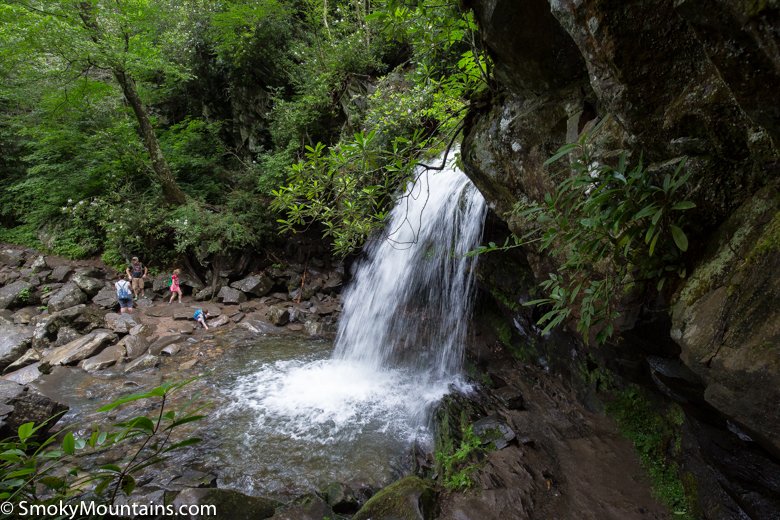
Great Smoky Mountains National Park claims more than 800 miles of hiking trails, making it one of the finest destinations for hiking in the country. If this is your first solo hike in the park, consider a shorter, easier, well-traveled trail such as Laurel Falls, Grotto Falls, Porters Creek, or Andrews Bald.
Those will give you a chance to get the feel of hiking alone without venturing deep into the backcountry, and with plenty of other hikers on the trail. You can then tackle longer, more challenging, and more remote trails as you gain confidence and experience exploring the Great Smokies on your own!

